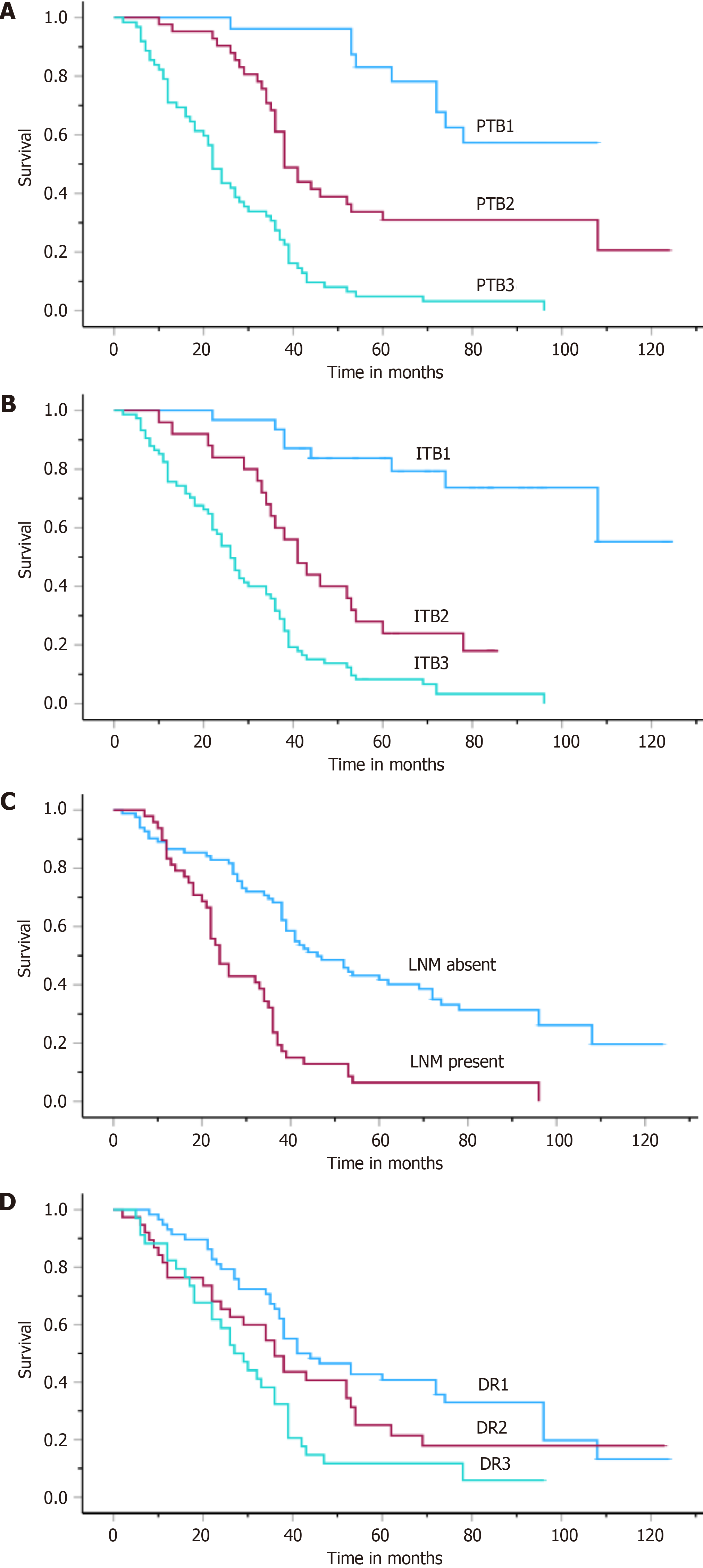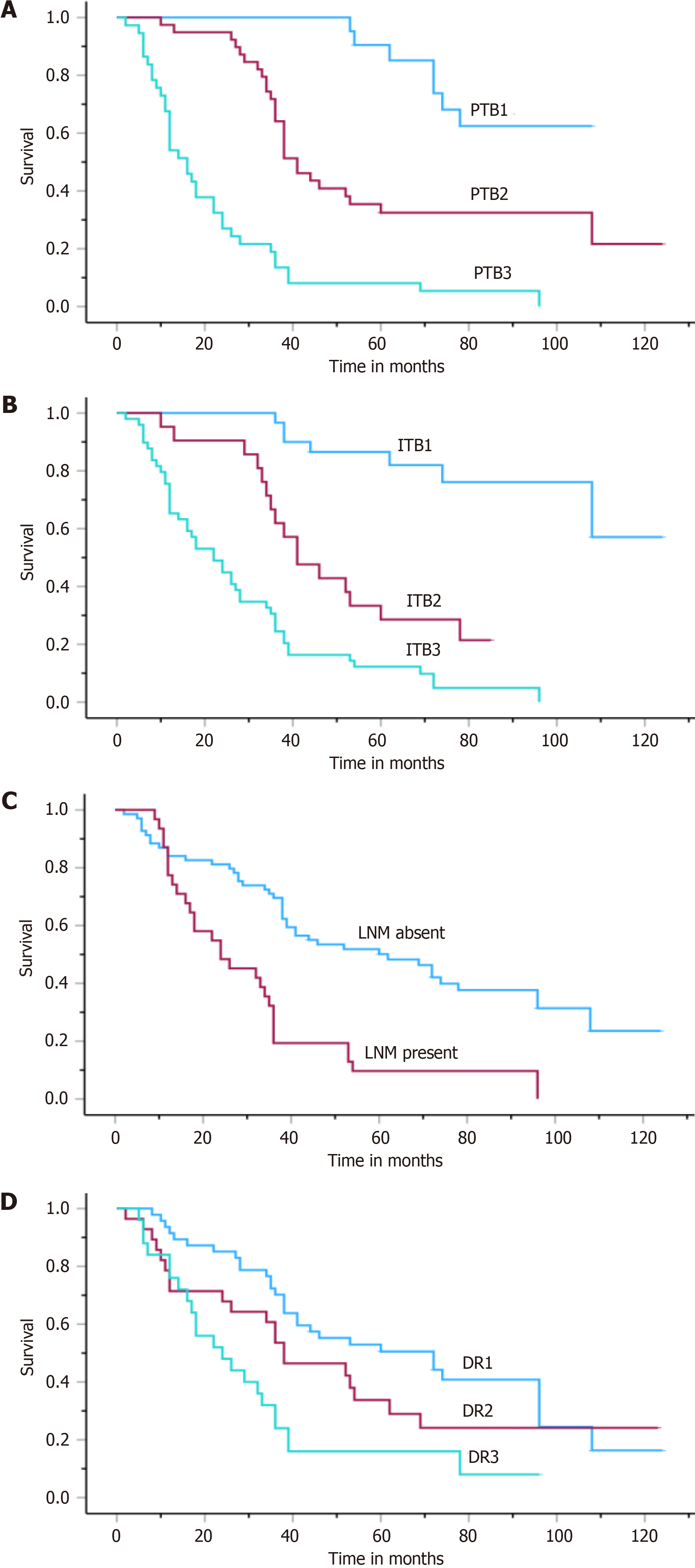Copyright
©The Author(s) 2024.
World J Gastrointest Pathophysiol. Apr 22, 2024; 15(1): 91237
Published online Apr 22, 2024. doi: 10.4291/wjgp.v15.i1.91237
Published online Apr 22, 2024. doi: 10.4291/wjgp.v15.i1.91237
Figure 1 Tumor budding grades assessed according to International Tumor Budding Consensus Conference recommendations, desmo
Figure 2 Scatter plot of Spearman’s rank correlation between peritumoral budding (vertical axis) and intratumoral budding (horizontal axis).
A: Whole cohort B: Intestinal subgroup. ITB: Intratumoral budding.
Figure 3 Kaplan-Meier curves of survival analyses in the total cohort.
A: Peritumoral budding (log-rank test P < 0.001); B: Intratumoral budding (log-rank test P < 0.001); C: The presence of lymph node metastasis (log-rank test P < 0.002): Desmoplastic reaction (log-rank test P < 0.002). PTB: Peritumoral budding; ITB: Intratumoral budding; LNM: Lymph node metastasis; DR: Desmoplastic reaction.
Figure 4 Kaplan-Meier curves of survival analyses in patients with an intestinal subtype of gastric adenocarcinoma.
A: Peritumoral budding (log-rank test, P < 0.001); B: Intratumoral budding (log-rank test, P < 0.001); C: Desmoplastic reaction (log-rank test, P < 0.001); D: The presence of lymph node metastasis (log-rank test, P < 0.001). PTB: Peritumoral budding; ITB: Intratumoral budding; LNM: Lymph node metastasis; DR: Desmoplastic reaction.
- Citation: Yavuz A, Simsek K, Alpsoy A, Altunay B, Gedik EO, Unal B, Bassorgun CI, Tatli AM, Elpek GO. Prognostic significance of tumor budding, desmoplastic reaction, and lymphocytic infiltration in patients with gastric adenocarcinoma. World J Gastrointest Pathophysiol 2024; 15(1): 91237
- URL: https://www.wjgnet.com/2150-5330/full/v15/i1/91237.htm
- DOI: https://dx.doi.org/10.4291/wjgp.v15.i1.91237












